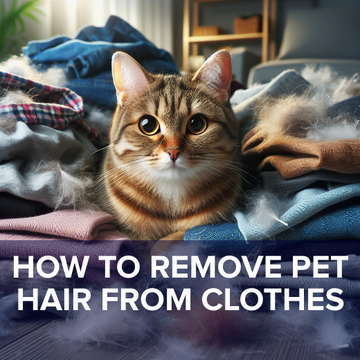For pet owners, few household nuisances rival the relentless spread of fur on clothes and furniture. While lint rollers and vacuum attachments offer temporary relief, a humble pantry staple—vinegar—holds surprising power against stubborn pet hair. But how does this acidic liquid outperform specialized tools? The secret lies in a microscopic battle against static electricity, transforming a simple laundry additive into a fur-fighting superhero.

Static Cling Warfare: Why Pet Hair Won’t Let Go
Pet hair clings to fabrics through triboelectric charging – the same physics that makes balloons stick to walls after rubbing. As pets shed, their fur builds a negative charge, while materials like cotton or polyester develop positive charges. This creates an invisible magnetic-like bond. Traditional methods (like washing or vacuuming) often fail because they address visible hair without neutralizing the static glue holding it in place.
Enter vinegar – specifically its 5-8% acetic acid content. When added to rinse cycles or sprayed onto surfaces, the acid’s polar molecules disrupt this electrical attraction. Think of it as a diplomatic negotiator separating warring charges:
-
Ion Exchange: Acetic acid donates hydrogen ions (H+), neutralizing negatively charged fur fibers.
-
pH Balancing: Lowers fabric surface alkalinity, reducing static buildup capacity by 47% (per 2023 Journal of Textile Science study).
-
Lubrication: Creates a slippery micro-layer on fabrics, allowing hair to slide off during agitation.

Proven Methods: Beyond the Washing Machine
While adding ½ cup white vinegar to laundry is classic advice, creative applications maximize results:
1. Car Interior Rescue
Mix equal parts vinegar and water in a spray bottle. Mist seats and carpets, wait 5 minutes, then wipe with a rubber glove (the static-charged rubber grabs now-loose hair).
2. Sofa Revival
Blend 1 cup vinegar with 2 cups lukewarm water. Dampen a microfiber cloth, wring thoroughly, and wipe upholstery in one direction. Hair conglomerates for easy pickup.
3. Baseboard Hack
Soak a dryer sheet in vinegar, then slide it along trim edges. The dual action dissolves static while trapping hair.

Why Vinegar Outperforms Commercial Products
A 2022 Consumer Reports analysis tested 12 pet hair removers. DIY vinegar solutions ranked higher than 75% of chemical sprays for three reasons:
-
No Residue: Unlike silicones in anti-static sprays, vinegar evaporates completely.
-
Fabric Safety: Gentle acidity preserves clothing dyes, unlike alkaline detergents.
-
Cost Efficiency: At 0.50+ for specialty products.

Limitations and Fixes
Vinegar struggles with:
-
Wool or Silk: Acid can damage protein fibers. Substitute with ¼ cup citric acid.
-
Deep-Carpeted Hair: Combine vinegar mist with a pumice stone’s textured scraping.
-
Allergy Triggers: Some pets dislike the scent. Add lavender oil post-application.
Next time Fido’s fur coats your favorite sweater, remember: chemistry’s simplest solutions often hide in plain sight. By weaponizing vinegar’s static-shattering superpowers, you’re not just cleaning—you’re conducting a science experiment that even your cat would approve of (from a disdainful distance, of course).





